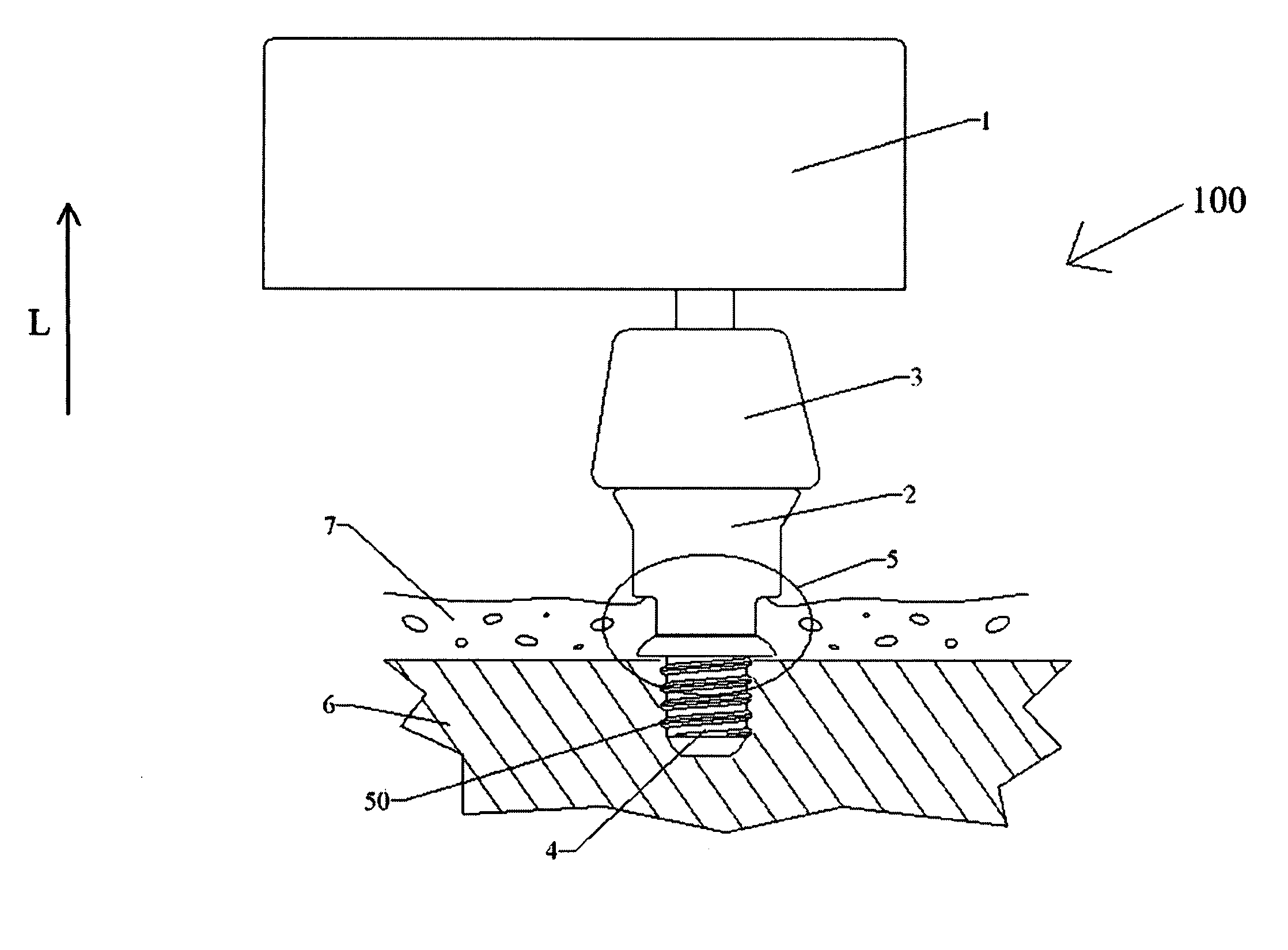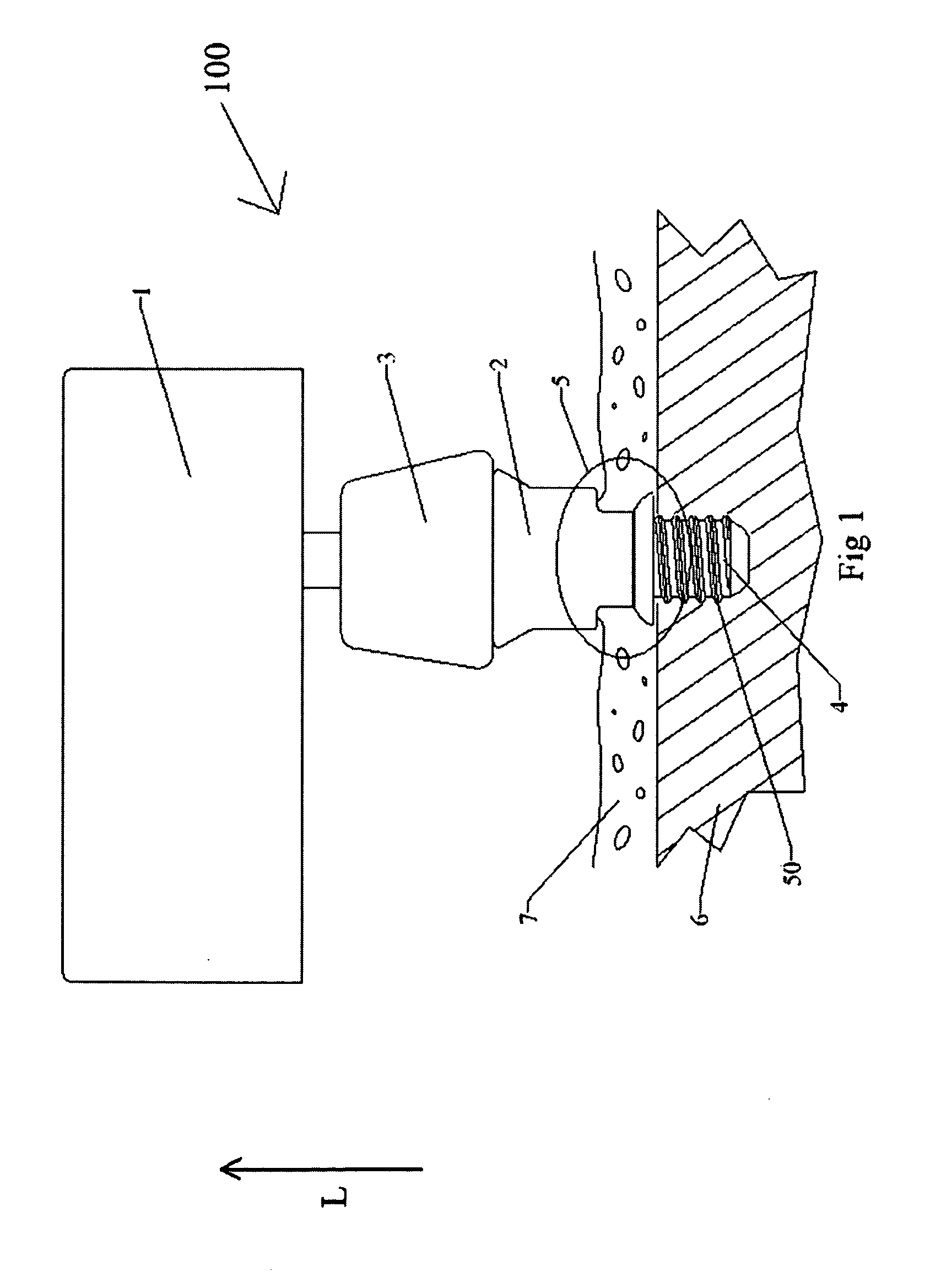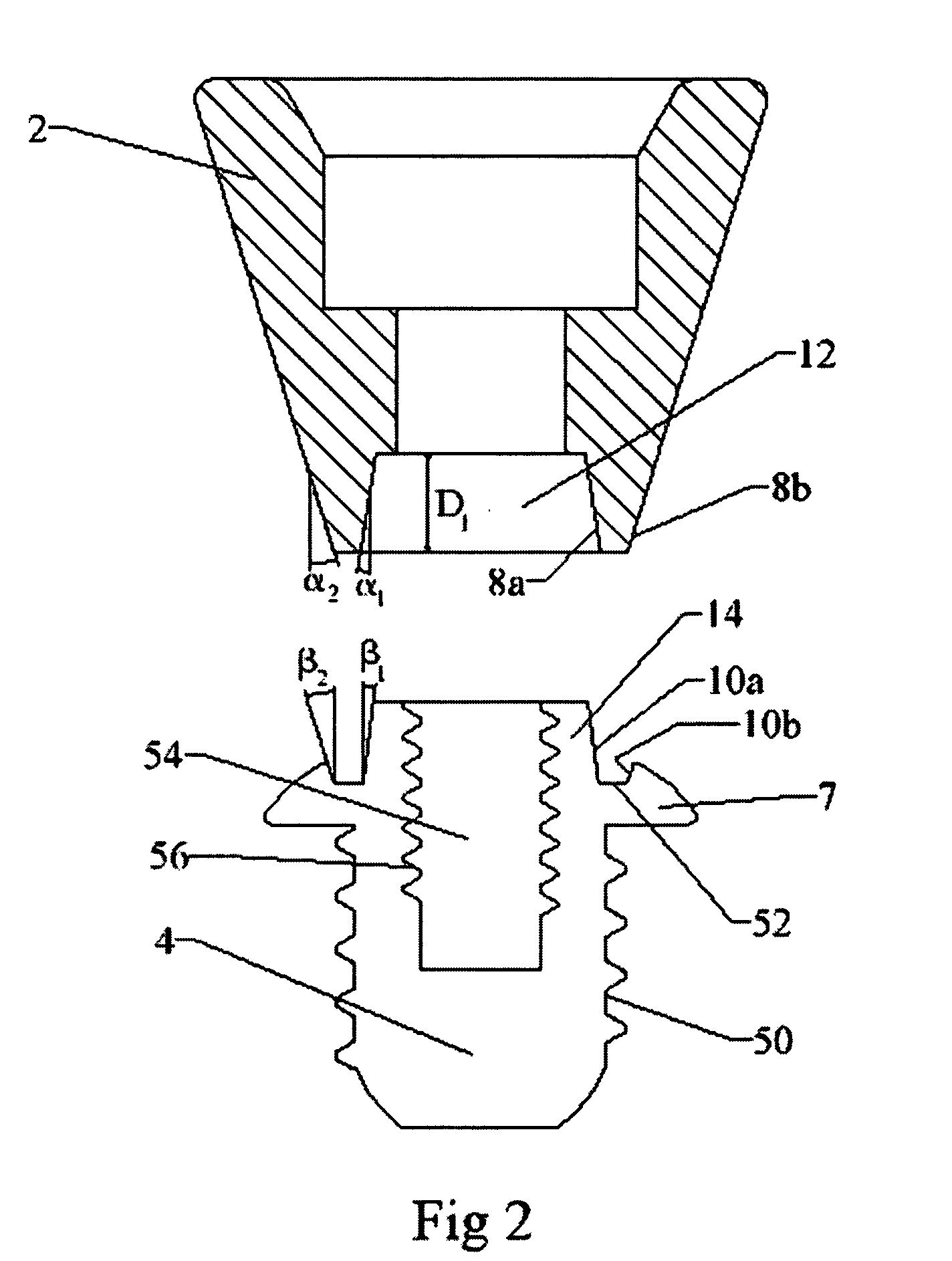Hearing-aid interconnection system
a technology of interconnection system and abutment, which is applied in the direction of transducer casing/cabinet/support, medical science, dentistry, etc., can solve the problems of hindering the passage of bacteria from the inside of the abutment through the interconnection to the skin penetrating area, and achieves the effect of reducing the force on the sensitive bone-fixture interface, reducing sealing pressure, and facilitating removal
- Summary
- Abstract
- Description
- Claims
- Application Information
AI Technical Summary
Benefits of technology
Problems solved by technology
Method used
Image
Examples
Embodiment Construction
[0034]FIG. 1 shows an overview of a bone anchored hearing aid system 100 of the present system. A hearing aid device 1 is connected to a hearing aid abutment 2 via a coupling 3. The coupling may be removably connected to the abutment 2 and to the hearing-aid device 1. The abutment 2 is connected to a fixture 4 via an interconnection 5. The fixture may have a threaded portion 50 that is anchored in the skull bone 6. The abutment 2 may go through the skin 7. When the system 100 is properly mounted to a skull bone 6, vibrations are transmitted from the hearing aid device 1 to the skull bone 6 and the patient can then hear via bone conduction. A lateral direction may be defined by the arrow (L) that is parallel to an axial direction of the interconnection.
[0035]FIG. 2 is a cross-sectional side view of a separated hearing aid abutment 2 and a fixture 4 of a preferred embodiment. The fixture 4 has an outwardly protruding flange 7 that has a circular upper cavity 52 defined therein by con...
PUM
 Login to View More
Login to View More Abstract
Description
Claims
Application Information
 Login to View More
Login to View More - R&D
- Intellectual Property
- Life Sciences
- Materials
- Tech Scout
- Unparalleled Data Quality
- Higher Quality Content
- 60% Fewer Hallucinations
Browse by: Latest US Patents, China's latest patents, Technical Efficacy Thesaurus, Application Domain, Technology Topic, Popular Technical Reports.
© 2025 PatSnap. All rights reserved.Legal|Privacy policy|Modern Slavery Act Transparency Statement|Sitemap|About US| Contact US: help@patsnap.com



